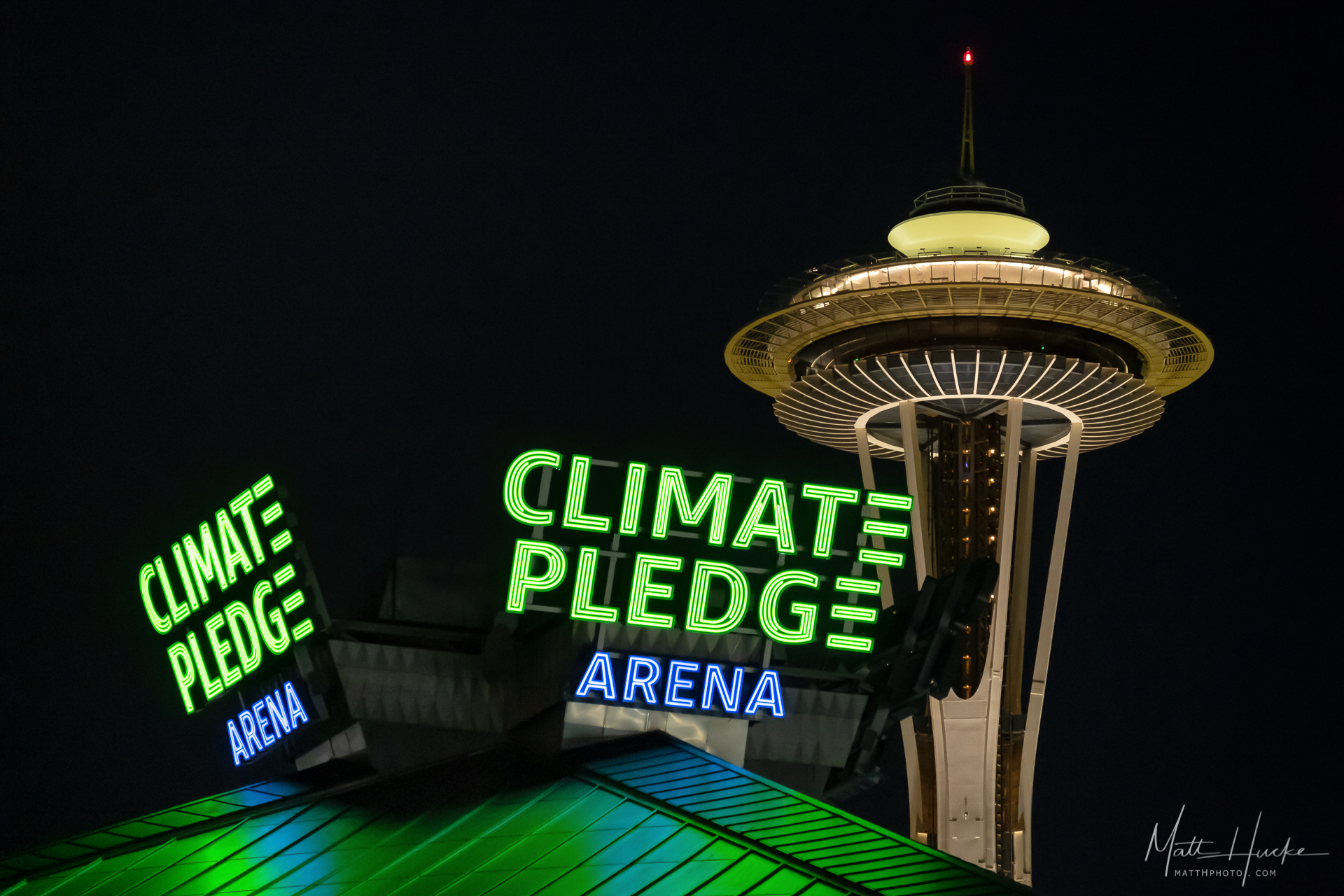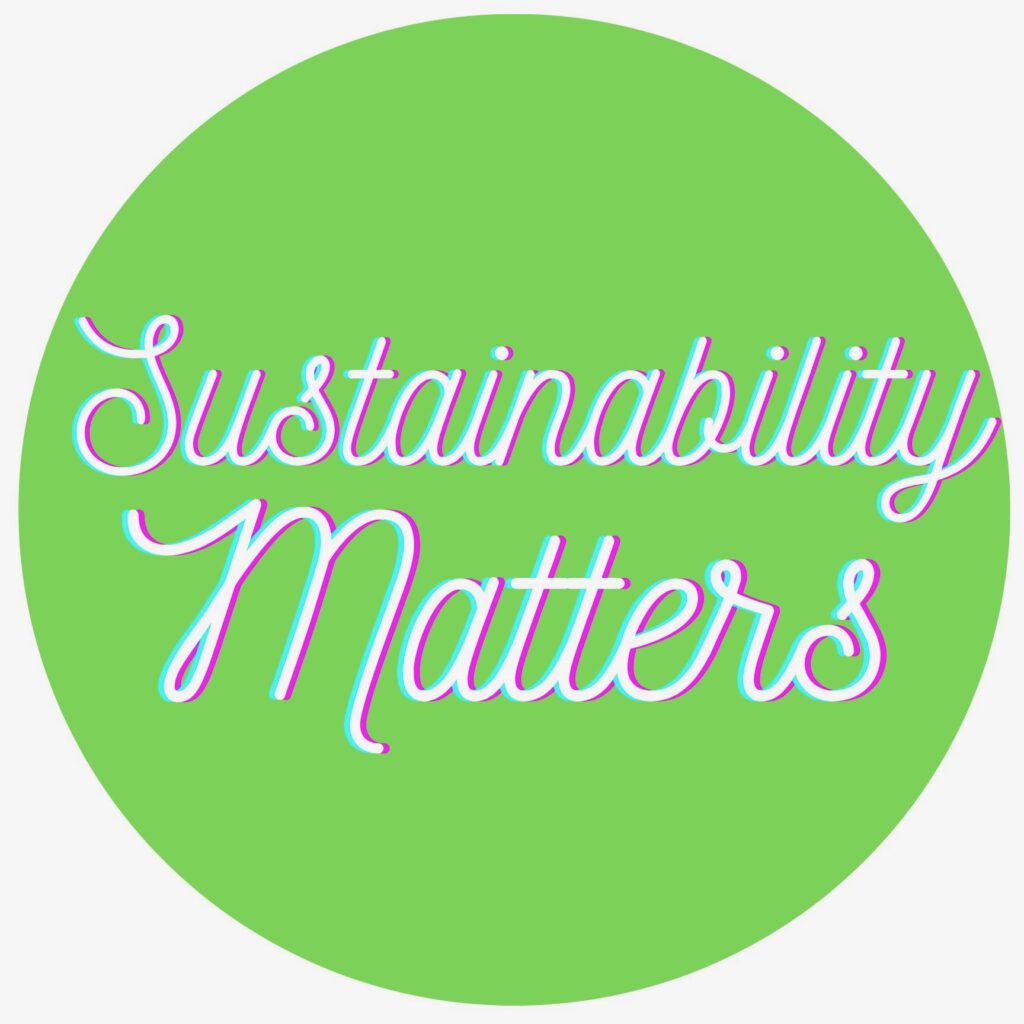Located in Seattle’s City Center, the Climate Pledge Arena was first opened under its current name in October 2021. The 800,000 sq ft arena hosts up to 18,000 guests for concerts, basketball games, and roller derby events, and is the current home to Seattle’s NHL team, the Kraken.
But Climate Pledge Arena is much more than just a host for sporting events: it is a piece of Seattle history and an eye-opening look into the world of carbon-neutral projects. In this post we’ll explore the building’s historic roots, how it came to achieve a carbon net neutral certification, and what the practices of Climate Pledge Arena can teach us going forward.
History
The building itself was built in 1962 as the Washington State Pavillion for the Century 21 Exposition. Once the event concluded, the city of Seattle purchased the building and began the process of converting it into the Washington State Coliseum to host Seattle’s basketball team – the SuperSonics.
In 1995, the building was renovated once again and renamed KeyArena, aiming to bring the arena back up to current NBA standards. After extensive research on its practicality, the city made the decision to dig under the building to grow the seating capacity and create the underground viewing experience we get today. The arena remained the host of the SuperSonics until 2008 when the team was relocated after years of negotiations.
In the years following the loss of the SuperSonics, KeyArena continued to host concerts and sporting events, but the building no longer drew in crowds the way it did before. Due to this, the city agreed to a renovation and revival of the building in 2017 with plans to create a space capable of once again hosting an NBA and NHL team.
In 2020, Amazon won naming rights to the new arena, crowning it Climate Pledge Arena and vowing to make the building and all of its operations carbon net neutral. After its completion in 2021, it became the first arena to achieve that goal.
Sustainability practices
It is no small feat to make such a large endeavor carbon neutral, so the project was approached from a variety of different angles, focusing on renewable energy, water conservation, and effective waste management.
To begin, the arena is entirely electric, using zero fossil fuels to run the operation. Even the Zamboni is electric! The building relies on 100% renewable energy, utilizing an array of solar panels across the roof of the building and local Seattle hydropower. In addition, the arena is currently working with Seattle City Light to shift entirely to developing solar and wind farms.
The facility is entirely zero-waste, prioritizing compostable and recyclable materials and even going as far as hand sorting all waste material on site.
In addition, the arena strategically limits its water consumption using rain collection methods, perfect for the classically wet city of Seattle! They have implemented a trademark “Rain-to-Rink” system, using a 15,000-gallon cistern that captures rainwater they use to make the ice.
The arena has also made efforts to encourage the use of public transportation to and from its events. Parking is limited on-site, but the city has established 1,500 discounted parking spots within .5 miles of the arena and the conveniently located building is accessible by the city monorail and multiple bus lines. In addition, all ticketed attendees of a Climate Pledge Arena event receive a free pass for public transportation, valid for two hours before and two hours after the event.
After one year of implementing these practices and undergoing comprehensive vetting, the arena was granted the Zero Carbon Certification by the International Living Future Institute, making it one of the largest buildings in the world to sport the distinction.
Is that enough?
While the efforts made to run such a sustainable endeavor are truly impressive, the owners still needed to find a way to offset the carbon emissions from the arena’s renovation to truly achieve a net carbon-neutral certification. To do this, they purchased “voluntary carbon offset credits”, which are essentially investments in non-profit organizations and projects that achieve certified reductions of carbon emissions in the atmosphere. For the sake of Climate Pledge Arena, credits were purchased from a deforestation project in the Colombian rainforest.
While the actual impact of these carbon credit projects can be hard to quantify, it is an interesting new player in the game of “carbon net neutrality”. It creates incentives for businesses to invest in carbon reduction projects all over the globe, meaning that while it is sometimes impossible to avoid generating carbon emissions, there are newly formed avenues for equalizing that impact.
What can we learn?
While most of us probably don’t have plans to build a large hockey arena anytime soon, there are some interesting takeaways we can gain from the Climate Pledge Arena project. First, carbon net neutrality is possible even on a large scale. And it doesn’t have to be complicated. Forgetting about carbon credits for a moment, most of the practices at Climate Pledge Arena are old tricks: lowering water consumption, recycling and composting, encouraging the use of public transportation, and swapping out fossil fuels for renewable energy. It may not be feasible to make your business entirely carbon neutral, but the scope of Climate Pledge Arena’s commitment to sustainability demonstrates it truly is possible for us to begin reversing the environmental impact of our projects.
References
Bush, E. (2023, November 23). Behind the world’s first “zero-carbon” arena, a questionable carbon credit market. NBCNews.com. https://www.nbcnews.com/science/environment/worlds-first-zero-carbon-arena-questionable-carbon-credit-market-rcna121874
Newcomb, T. (2023, October 17). Climate Pledge Arena first arena to earn net zero carbon certification. Forbes. https://www.forbes.com/sites/timnewcomb/2023/10/16/climate-pledge-arena-first-arena-to-earn-net-zero-carbon-certification/?sh=6cb8909662db
Wikimedia Foundation. (2023, December 30). Climate pledge arena. Wikipedia. https://en.wikipedia.org/wiki/Climate_Pledge_Arena
Photo by Matt Hucke, 2021

